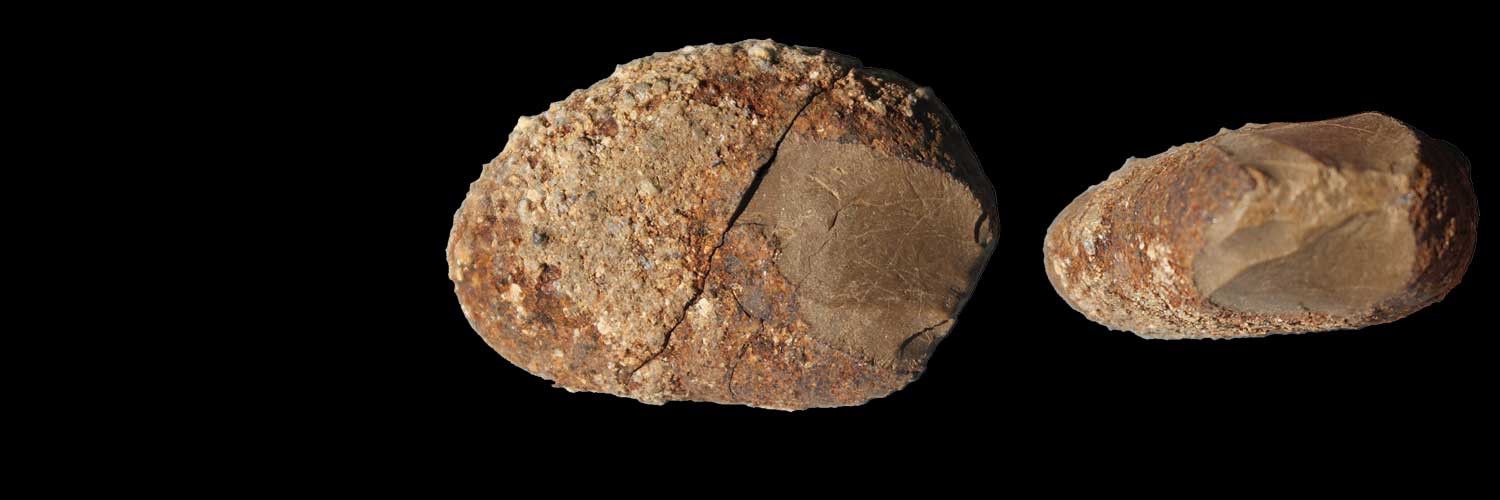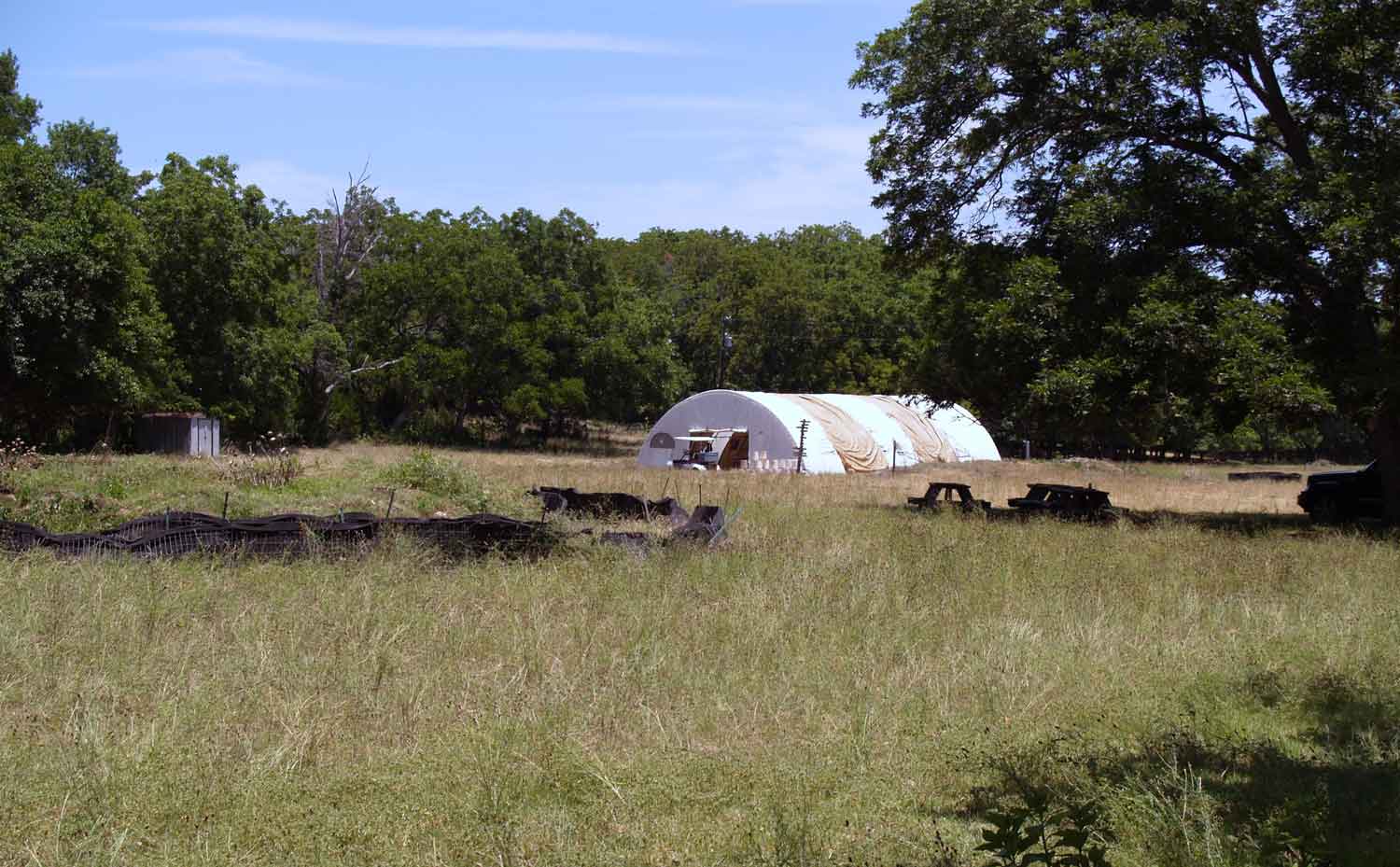Did humans approach the southern tip of South America more than 18,000 years ago?
An article by Tom Dillehay and coworkers describes the archaeology of Monte Verde I, preserving artifacts together with burned features.

Tom Dillehay has for many years investigated the archaeological remains at Monte Verde, Chile. These provide some of the earliest evidence of human habitation in the Americas, with well-documented cultural material from 14,500 years ago (calibrated). This early occurrence was for the site designated Monte Verde II, and has abundant cultural evidence including at least two structures, human footprints, and many artifacts. It is widely regarded as the earliest most solid evidence of human habitation in South America.
Monte Verde is a bit south of the midpoint of Chile, around 1500 km from the southernmost tip of the South American mainland. While archaeologists still debate the earliest evidence of human activity in North America, it is clear that people must have gotten to North America early enough for them to end up near the southern end of South America more than 14,000 years ago.
In PLoS ONE this week, Dillehay and colleagues report on the results of further archaeological survey work at Monte Verde, this time at the locality designated Monte Verde I. Earlier investigation of Monte Verde I (MV-I) had uncovered what seemed to be very early artifacts, but not with contexts that Dillehay and colleagues had judged to be adequate to substantiate their surprisingly early dates. But during the new excavation work, they uncovered artifacts together with localized burned features in association with radiocarbon ages that, when calibrated, imply that some of the features are at least 18,500 years old.
This paragraph from the paper tells the overall story of their excavation goals:
Based on our previous findings at MV-I, which revealed possible cultural evidence laterally dispersed in deeper, sandy levels of the sandur plain, our recent work centered on spatially intermittent excavations and core drillings across a 500 m area between the MV-I and Chinchihuapi sites in search of additional scattered remains down to and below these levels (Fig 2). The result was the discovery of twelve small, discrete burned features directly associated with fragments of burned and unburned faunal remains, spherical and manuport stones, and human-knapped flakes dated by 14C and OSL means between at least 18,500 and 14,500 cal BP (Fig 3, S4 and S5 Figs). The features and associated lithics and bones are spatially limited within discrete lenses, averaging ~33 by 42 cm in spatial extent and ~1.0 to 2.8 cm in thickness. Only one excavated unit, measuring 5 by 5 m in size, contained more than one feature, indicating their widespread and intermittent dispersion across the study area. Although both horizontally and vertically discontinuous, these remains appear to represent ephemeral seasonal activities laterally spread across uneroded, slightly elevated surfaces (~0.5–0.8 m high) between small, narrow and shallow channels of a braided drainage system buried in the SCH-Fm (Fig 2 and S1 Fig).
The depiction here is an ancient streamside landscape upon which humans periodically camped with fires. The artifacts come from a fairly systematic survey with test pits and cores drilled at regular intervals, but the overall excavation area is quite limited. The archaeological features are single small burned areas with artifacts, and are apparently in good stratigraphic context.

Obviously more intensive archaeological investigation of the site may yield more information. But one of the most interesting things about the Monte Verde sites is that the overall situation is not very exceptional. The peat-rich sediments do preserve organic material and evidence for burned features very well, but otherwise the Monte Verde I occurrences are just streamside terraces with small-scale fires and some artifacts. There should be hundreds of stream banks in South America with the same archaeological potential.
There is a school of thought that population growth should have been rapid once humans entered the virgin landscape of the Americas. With sufficiently rapid growth, the earliest signs of habitation should have been rapidly followed by continent-wide evidence of human populations. By this logic, if people first arrived more than 18,000 years ago, then we should find abundant evidence of them long before 16,000 years ago throughout the Americas.
But there may be a problem with the assumption of rapid growth. It assumes that people could rapidly change their strategies to spread into the very different ecologies of inland North and South America.
Maybe it wasn’t so easy for them to develop the technical and organizational innovations necessary to move into those continental ecosystems.
Sure, humans may have spread rapidly within one relatively uniform environment. Moving down the west coast of the Americas, using coastal resources, may have been such a relatively uniform environment. That’s the proposal that Jon Erlandson and colleagues call the “kelp highway” hypothesis. The idea is that kelp forest ecosystems in the coastal waters of northeastern Asia and North and South America are highly productive habitats. Once people had the ability to move within the coastal waters, they would have had a very easy time hopping among those coastal kelp forests.
A coastal maritime lifestyle of some kind must have existed in Southeast Asia well before 25,000 years ago, and enabled humans to occupy Okinawa by 18,000 years ago.
We know from the experiences of the Polynesians within the last 2000 years that island-hopping does not lead inexorably to success on every island. Some populations find favorable spots and can grow rapidly, if they come equipped with the right technology—and for Polynesians that technology includes domesticated plants and animals. But other occupations are purely ephemeral. For a maritime gathering and fishing population, without domesticated plants and animals, I’m not sure we should consider it surprising if they did not spread inland for a few thousand years after they had first established some coastal presence in South America.
But even more interesting is the possibility that they did spread inland. As Dillehay and colleagues briefly suggest in their introduction, the earliest sites in North America might even represent a back-migration of people from South America.
I have probably been too influenced by the assumption of logistic growth for early inhabitants of the Americas, an assumption that greatly downplays the challenges of developing effective cultural means of supporting population expansion into new ecologies. The spread of modern humans from Africa seems to have taken tens of thousands of years. As a time-averaged rate, modern humans moving across southern Asia, or into Europe, or across Australia, all seem to have been much slower than many of us have been assuming for the Americas.
Sure, many of the Old World cases involve possible encounters with other human populations, but we now know that mixture was an option. Modern humans encountering well-adapted Neandertals, mixing with them and witnessing Neandertal cultures, should have expanded into Europe vastly more rapidly than ancient mariners who found themselves on the coast of South America.
Imagine being born into a culture with a rich legacy of thousands of years of cultural knowledge of coastal resources, and instead of following the ways of your ancestors, deciding to strike into Patagonia, or into the Amazon rainforest, or across the Atacama Desert.
The archaeologists who consider the initial habitation of the Americas have long thought about these logistical issues, and there are no easy answers. But South America may well have been home to a Last Glacial Maximum human population, one that took 4000 years to spread across both North and South America.
The earliest cranial remains we have from both North and South America are surprisingly variable in comparison to later peoples of the Americas. Those skulls suggest the possibility that they represent populations that had already experienced a lot of diversifying evolution by genetic drift. An earlier initial spread of humans across South America might explain that appearance.
There is nothing in the genetics today to exclude this early habitation scenario, particularly considering that revisions to a lower autosomal mutation rate have not been fully factored into most of the work on early Americans. But there is an additional interesting possibility: Maybe the first inhabitants of the Americas were mostly genetically supplanted by later peoples. Could there have been an earlier habitation, now only present in living Native American peoples as traces of a “ghost population” that we haven’t yet identified?
If so, that scenario might explain the evidence for “deep divergence in Native American populations” that Rasmussen et al. (2014) found to predate the 12,600-year-old Clovis-associated Anzick-1 burial.
These are bound to be interesting times for people interested in the habitation of the Americas. What I think is exciting is that the ancient genomes provide so much evidence and context for relationships, but actually do not answer many of the key questions. We need these different sources of data to start working together with each other.
And we need more exploration. If MV-I is really that old, there should be hundreds of other sites out there to be found.
Oh, and one more thought on this paper—isn’t it cool that they published it open access? More and more interesting results are coming out in these journals where the images and text can be freely used and read by anyone in the world.
References
Dillehay TD, Ocampo C, Saavedra J, Sawakuchi AO, Vega RM, Pino M, et al. (2015) New Archaeological Evidence for an Early Human Presence at Monte Verde, Chile. PLoS ONE 10(11): e0141923. doi:10.1371/journal.pone.0141923
Erlandson, J. M., Graham, M. H., Bourque, B. J., Corbett, D., Estes, J. A., & Steneck, R. S. (2007). The kelp highway hypothesis: marine ecology, the coastal migration theory, and the peopling of the Americas. The Journal of Island and Coastal Archaeology, 2(2), 161-174. doi:10.1080/15564890701628612
Rasmussen, M., Anzick, S. L., Waters, M. R., Skoglund, P., DeGiorgio, M., Stafford Jr, T. W., ... & Willerslev, E. (2014). The genome of a Late Pleistocene human from a Clovis burial site in western Montana. Nature, 506(7487), 225-229. doi:10.1038/nature13025
John Hawks Newsletter
Join the newsletter to receive the latest updates in your inbox.



